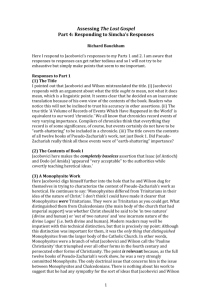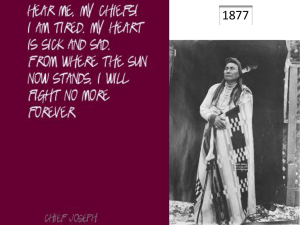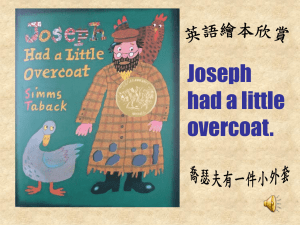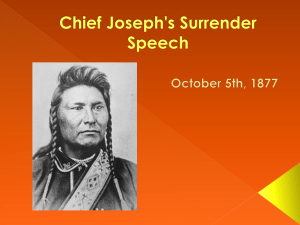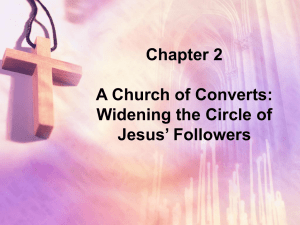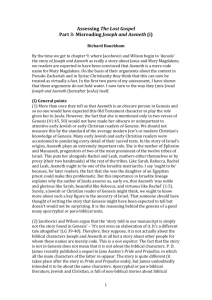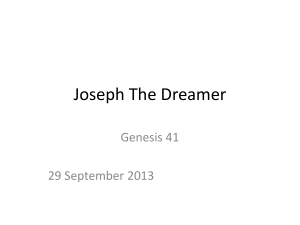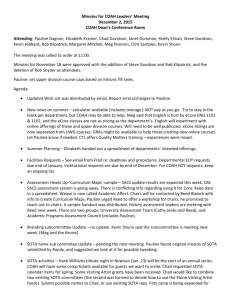Word - Mark Goodacre
advertisement
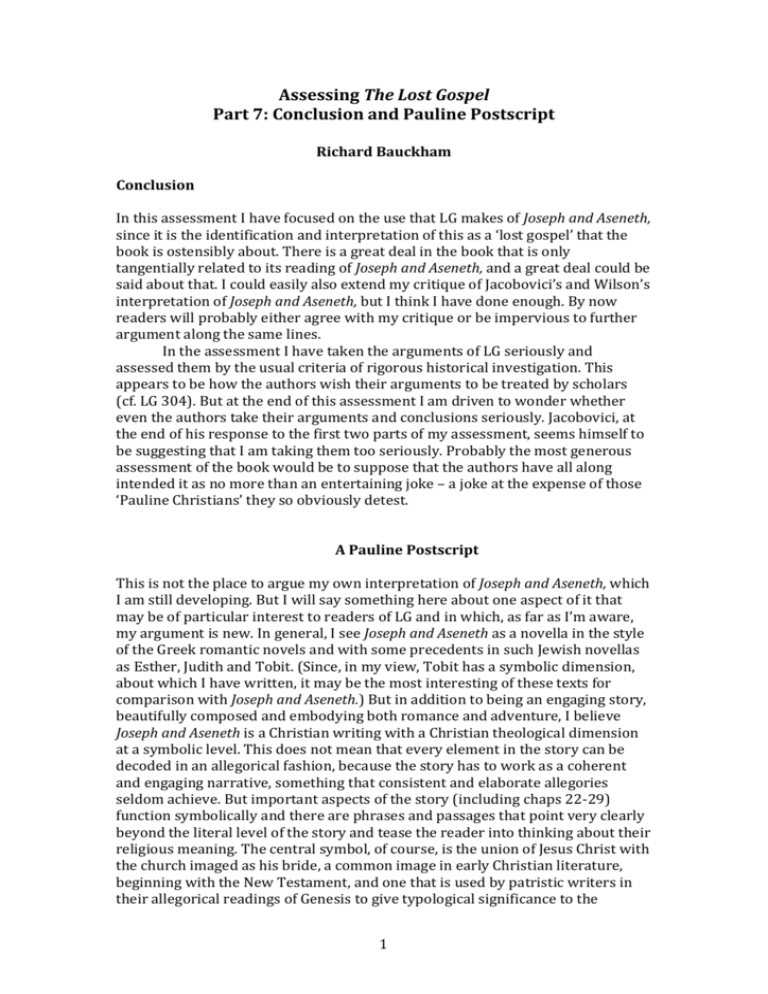
Assessing The Lost Gospel Part 7: Conclusion and Pauline Postscript Richard Bauckham Conclusion In this assessment I have focused on the use that LG makes of Joseph and Aseneth, since it is the identification and interpretation of this as a ‘lost gospel’ that the book is ostensibly about. There is a great deal in the book that is only tangentially related to its reading of Joseph and Aseneth, and a great deal could be said about that. I could easily also extend my critique of Jacobovici’s and Wilson’s interpretation of Joseph and Aseneth, but I think I have done enough. By now readers will probably either agree with my critique or be impervious to further argument along the same lines. In the assessment I have taken the arguments of LG seriously and assessed them by the usual criteria of rigorous historical investigation. This appears to be how the authors wish their arguments to be treated by scholars (cf. LG 304). But at the end of this assessment I am driven to wonder whether even the authors take their arguments and conclusions seriously. Jacobovici, at the end of his response to the first two parts of my assessment, seems himself to be suggesting that I am taking them too seriously. Probably the most generous assessment of the book would be to suppose that the authors have all along intended it as no more than an entertaining joke – a joke at the expense of those ‘Pauline Christians’ they so obviously detest. A Pauline Postscript This is not the place to argue my own interpretation of Joseph and Aseneth, which I am still developing. But I will say something here about one aspect of it that may be of particular interest to readers of LG and in which, as far as I’m aware, my argument is new. In general, I see Joseph and Aseneth as a novella in the style of the Greek romantic novels and with some precedents in such Jewish novellas as Esther, Judith and Tobit. (Since, in my view, Tobit has a symbolic dimension, about which I have written, it may be the most interesting of these texts for comparison with Joseph and Aseneth.) But in addition to being an engaging story, beautifully composed and embodying both romance and adventure, I believe Joseph and Aseneth is a Christian writing with a Christian theological dimension at a symbolic level. This does not mean that every element in the story can be decoded in an allegorical fashion, because the story has to work as a coherent and engaging narrative, something that consistent and elaborate allegories seldom achieve. But important aspects of the story (including chaps 22-29) function symbolically and there are phrases and passages that point very clearly beyond the literal level of the story and tease the reader into thinking about their religious meaning. The central symbol, of course, is the union of Jesus Christ with the church imaged as his bride, a common image in early Christian literature, beginning with the New Testament, and one that is used by patristic writers in their allegorical readings of Genesis to give typological significance to the 1 marriage of Joseph and Aseneth. But, as readers of this assessment of LG will be well aware, I do not think that Mary Magdalene has anything at all to do with this text! As in many other early Jewish and Christian texts, biblical allusions play a key part in giving the text more meaning than it might have were such allusions not present or not noticed. Some of the allusions to the Old Testament (LXX) are well known, though I do not think their full significance has been generally appreciated. Allusions to the New Testament are more rarely noticed, because the majority of scholars have interpreted Joseph and Aseneth as a non-Christian Jewish text. Where they have noted parallels in the NT they have tended to regard them either as interesting Jewish precedents for the NT texts or dismissed them as Christian interpolations in the Jewish work that is their sole interest. My particular concern in this note is the extent of significant allusion to Paul’s writings, which has not been previously appreciated. There is recurrent reference in JosAs to ‘the bread of life’ and ‘the cup of blessing,’ in surely unmistakable allusion to the Christian eucharist. The first of these phrases is from the Gospel of John (John 6:35, 47), the second from Paul (1 Cor 10:16). This Pauline allusion has often been observed, though not always taken seriously. But I wish to draw attention to two other Pauline passages that have influenced JosAs: I feel a divine jealousy for you, for I promised you in marriage to one husband, to present you as a chaste virgin (παρθένον ἁγνὴν) to Christ (2 Cor 11:2 NRSV). But we were gentle among you, like a nurse (τροφὸς) tenderly caring for her own children (1 Thes 2:7 NRSV). In JosAs both the ‘man’ from heaven and Joseph call Aseneth ‘chaste virgin’ (παρθένος ἁγνὴ: 15:1, 2, 4, 6, 10; 19:9), exactly the phrase used in 2 Cor 11:2, one of Paul’s rare uses of the image of the church as the bride of Christ. This Pauline text has influenced the portrayal of Aseneth in JosAs and accounts for the emphasis this work places on Aseneth’s unsullied virginity up to her marriage (note especially 21:1). In the second of these Pauline quotations, Paul compares his care for the church with that of a mother or foster mother caring for her children (1 Thes 2:7). The word τροφός is feminine. Its masculine equivalent is τροφεύς, which is used in the sense of ‘foster father’ in JosAs 18:2, 3, 5, 7, 11. I think this Pauline text accounts for the otherwise rather puzzling figure of Aseneth’s foster father in chapter 18. (Would his narrative role not have been adequately performed by Aseneth’s father’s steward, without portraying him as her foster father? Why should Aseneth have had a foster father?) The foster father represents Paul. In a narrative that symbolically portrays the church from the Gentiles as a bride of Christ, it is appropriate that the role of the apostle to the Gentiles in caring for that church in its infancy should be represented. So, if I am right, this work that Jacobovici and Wilson think derives from a non-Pauline, even anti-Pauline sector of earliest Christianity in fact features Paul himself in its symbolism, acknowledging his unique role in the early history of Christianity among the Gentiles. 2
![Title of the Presentation Line 1 [36pt Calibri bold blue] Title of the](http://s2.studylib.net/store/data/005409852_1-2c69abc1cad256ea71f53622460b4508-300x300.png)
